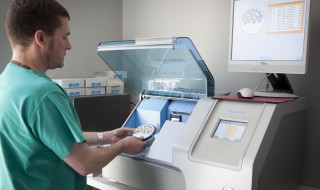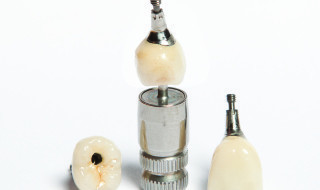
Guy Barwell looks at the world of implants over the last two decades.
The last 20 years has been good to the world of implants. The rate of change is obviously market driven and has moved away from minimal numbers of implants being placed in hospital settings for very focused and limited protocols, often with numerous problems due to the mechanical failings of early implant systems. The market has now pushed implants to the masses, with most professionals now accepting they are a part of general practice life.
The last five years
Unfortunately, the last five years has taken us into an era where this market is having a detrimental effect on the implementation of implants. Everyone is ‘getting on the bandwagon’ and, as is so commonly reported, poor planning with inexperience and the use of cut price implant systems is leaving many patients with some extraordinary issues that are hard to solve.
Having said that, today’s overriding view is that simple implants should be a minimally invasive, rapid and very long-term solution. While everyone has outliers from this base (irritatingly!), it is good to be able to offer solutions to patients with confidence and the feedback on many websites from patients is testament to this. Our confidence in single implants or short-span bridges that has been proven over the last decade is now joined by cases where reconstruction on just four to six implants for a full-arch bridge is standard everyday practice.
Rapid growth
The numbers of implants placed in the UK is a small percentage of the numbers in Europe, and we anticipate growth to be as rapid as it has been in the last few years (20-30%). We worked with the Ankylos implants model back in 2007/8, where surgical centres supply GDPs with well-placed implants, allowing restoration of all but the most complex cases out in practice. Simplifying the restoration has therefore been the goal to make the lives of referrers as easy and complaint free as possible. This explains the transition to screw retaining at implant level in all but a tiny fraction of restorations, immediate loading where possible and changing from standard six-month plans to eight to 10 weeks.
Digital revolution

Perhaps due to the time allowance in this field, and perhaps due to advanced aspects, the digital revolution has swept through and continues to do so. CBCT scanning is now the standard of care; once, we were the only centre in the south east with a scanner, and now all who offer implants have the units in-house. Computerised scanning and milling of metal has been part of the lab side for a few years now. Our laboratory Ceramic Designs doesn’t even have the capacity to cast metal. This is now pushing into the surgery with intraoral scanning instead of impressions.
However, this is not quite as honed as it will be in the coming 12-24 months. I suspect the next big marketing push that will be experienced with implant companies is going to be this digital aspect.
The last two years
In the last two years we have also been involved with some fabulous new techniques such as intraoral welding of superstructures and the use of PRF as a complete alternative to bone grafting in some cases, so surely the coming years will see further advances in the technologies behind the biochemistry of bone growth.
All this will make systems more stable in the long term and prevent issues commonly linked with implants, thus changing things for the next generation of dentists, where dental implants will be an overwhelming part of their practice.
For more information on The Implant Centre, visit www.theimplantcentre.com.


